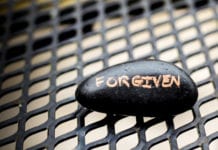Back in December I blogged that healthy small groups are friends. (See post here.) I’m not sure why, but this has recently become the most popular post on this blog. It was picked up recently by churchleaders.com (here), and Debra commented,
Small groups often divide the church into cliques. The group forms, bonds, and no new people stand a chance of joining them. The more groups there are, the more segregated the church. New people see this right away, feel like an outsider, which they are, and don’t go back.
Debra may be right IF a church’s small groups have not been taught how to develop groups in healthy ways. I am working on Chapter 5 of my upcoming book 7 Vital Signs of a Healthy Small Group (available from TOUCH this Spring). This chapter is about healthy authentic community. A healthy community is never a closed clique. It is open, inviting, welcoming, outward-focused, and missional. Healthy community fulfills all of the Great Commandment by loving God, one another, and our neighbors as ourselves. See my blog, “Healthy Small Groups Are Friends with Non-Christ-followers.”
The Best Small Group Leader Ever called his group “friends” (see John 15:12-17). Jesus led a small group and modeled for them how to live in healthy community. He said about himself, “I’m here to invite outsiders, not coddle insiders” (Matthew 9:13, The Message). That’s what healthy small groups are here for, too!
A description of a healthy community is in Acts 2:42-47. The first five verses describe how these people were committed to Jesus and one another. The last verse shows the result. Their community life had the effect of “enjoying the favor of all the people,” and because of this, “the Lord added to their number daily those those who were being saved” (Acts 2:47).
I love the way Richard Peace put this in his classic book, Small Group Evangelism:
In a successful [healthy] small group, love, acceptance and fellowship flow in unusual measure. This is the ideal situation in which to hear about the kingdom of God. In this context the “facts of the gospel” come through not as cold propositions but as living truths visible in the lives of others. In such an atmosphere a person is irresistibly drawn to Christ by his gracious presence.*
Debra described unhealthy small groups as what we might call “holy huddles.” The problem is not in the huddle itself, however. Every successful team needs a safe place to huddle to put our arms around one another, catch a short breather, and encourage one another before running the next play to accomplish the team’s mission. It breaks my heart to hear that these holy huddles are segregating Debra’s church instead of enjoying the favor of all the people. I pray they will become healthy, Christ-centered communities that stop coddling insiders and truly invite outsiders.










